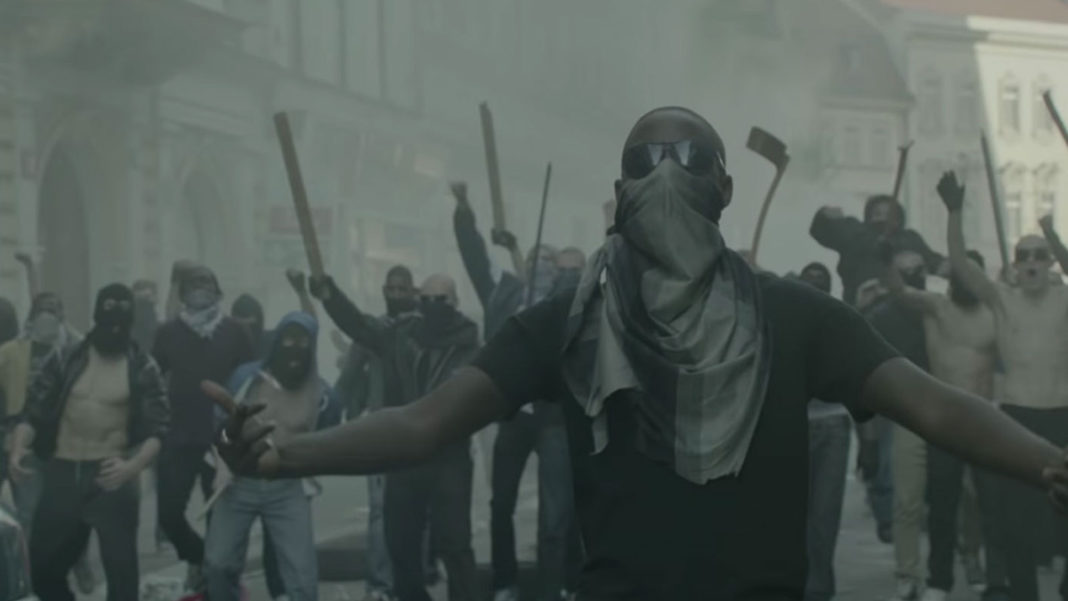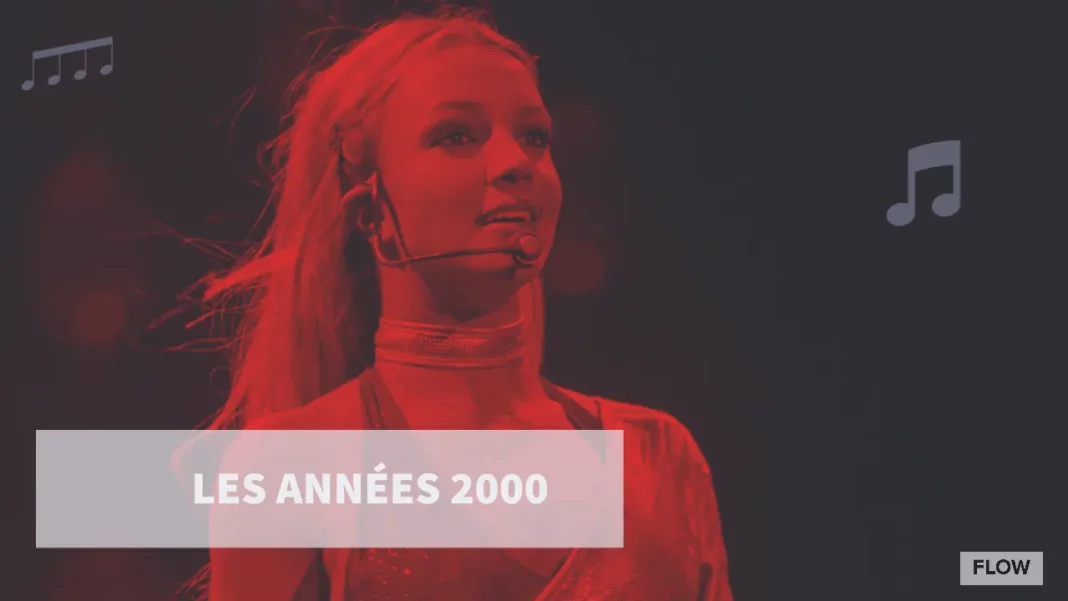Visual art: A sixth branch of the Hip-Hop movement ? At its foundation, the Hip-Hop movement consisted of five branches: Rap, DJ sets, dance, beatboxing, and graffiti. For a while, Hip-Hop, particularly Rap, was relegated to the outskirts of major cities. However, it eventually found its way into clubs and lounges. Who can forget the time when only “California Love” and “The Next Episode” were played in clubs where endless dance tracks dominated between the 90s and the mid-2000s? Today, the evolution of music consumption has propelled Hip-Hop into the realm of visual art, sometimes at the expense of musicality. But nothing comes without a cost.
Visual art: The beginning !
In the music industry, a few artists paved the way for the creation of intelligent “music videos.” The two superstars of the 80s and 90s, Madonna and Michael Jackson, are undoubtedly pioneers in this field. Madonna, always on the edge and courageous, challenged patriarchal and religious values. Let’s not forget that there was a time when nobody dared to challenge the Christian Church, yet Madonna boldly burned crosses in the visual imagery of “Like a Prayer.”
Art will triumph over the Catholic and Protestant Church, even though today, fanatics still march outside the Petit Châtelet theater when Romeo Castellucci challenges the power of the intangible by unveiling a video of Christ.
In a completely different spirit, Michael Jackson managed to capture the prime time of TF1 back then with the broadcast of his monumental “Black or White,” an anti-racist short film just a few decades after the civil rights movement in the USA. Prior to that, he had brought to life “Thriller,” a recreation of “Night of the Living Dead.” The zombies in the video symbolized our materialistic decadence and our alienation caused by money. Later on, this would inspire countless zombie movies, video games like “Resident Evil,” and, of course, “The Walking Dead.”
Before Hip Hop thrived, before Rap became the most listened-to music in the world, before Street Art found its place in public and private collections, and before the biggest clubs on the planet played tracks by Jay-Z and Beyoncé, Rap music videos were rather rudimentary, but artists already demonstrated great imagination. One of Wu-Tang Clan’s early hits, “C.R.E.A.M.,” is a true gem that takes you on a gang’s escapade. Some members of the Wu-Tang Clan would later become leaders of the East Coast hip-hop scene, such as Method Man & Redman, Ghostface Killah, and the late Ol’ Dirty Bastard, alongside their producer GZA, also known as The Genius.
On the other side of the United States, on the West Coast, the genesis of Death Row under Suge Knight, and the monsters it spawned, with Tupac and Dr. Dre leading the way, gave birth to “California Love.” Inspired by the desolate and ravaged deserts of Mad Max, the music video showcases the two iconic legends of the American West Coast.
Visual art: A sixth branch of the Hip-Hop movement?
However, despite everything, music videos have struggled to shed certain stereotypes that continue to be popular even today. Cars, vixens, and “bling bling” gold chains are the basic ingredients for a flashy video that will grab attention but leave no lasting memory. However, these symbols of wealth, the trio of “Sex, Power, and Money” proclaimed by Ärsenik, are part of the rebellion of the descendants of slaves. All of this is thrown at the master turned host and co-religionist as a reminder of a past they want to get rid of.
But time passes. And in the 2010s, a dual phenomenon occurred. Firstly, high-speed internet connections became widespread in most so-called “developed” countries, and secondly, the use of YouTube as a platform for music video dissemination became standard for rappers. The influence of social media also became evident. Finally, illegal downloading further devastated the music industry before its revival in the past five years with the rise of streaming services.
The effect was felt directly. The music video became a fundamental part of every artist’s communication strategy. Thus, visuals became not only a part of an artist’s image but also a determining factor in shaping that image.
One of the first masterpieces in the realm of music videos is “No Church In The Wild” directed by French filmmaker Gavras of Kourtrajme for Kanye West and, of course, Jay-Z. Taken from the album “Watch The Throne,” which is considered one of the best of its time, the visual depicts a real urban riot between the police and the youth. This video may have foreshadowed the works of Kendrick Lamar, for whom police brutality has had a significant influence. Given the recent events in the United States and the crimes that have affected the African-American community, this remains understandable.
Visual albums are also part of the history of this sixth branch of Hip-Hop. Before Beyoncé, there was the aforementioned GhostFace Killah and his albums “12 Reasons To Die” and “36 Seasons.” These albums told stories but without visuals. There was also Beyoncé’s “Lemonade,” which was released on HBO, although the former Destiny’s Child member has always had a knack for intertwining her music with visuals.
The king of music videos remains and will always be the great Kendrick Lamar. With his music video for “Alright,” he may have achieved the dream of Michael Jackson. Before creating the video for this song from his album “To Pimp a Butterfly,” the artist traveled to South Africa, discovering that apartheid, a painful political memory, has left behind very real practices and suffering. They filmed the “Alright” video in Oakland, USA. The video was directed by Colin Tilley.
Here, with a perfect black and white aesthetic and captivating metaphors, the new king of Compton denounces racism within the police force in the USA. In a detestable atmosphere where crime reeks of xenophobia, Kendrick uses poetry to gently illustrate the impossible truth.
In France, two artists in particular place great importance on their visuals: SCH and PNL. Since his beginnings on the mixtape “A7” and especially the music video for “Gomora,” culminating in the grand finale of “JVLIVS” presented as a true medium-length film, SCH has made visuals an essential part of his artistic activity. With SCH, the image, the storyline, the lyrics, and the musicality all come together in service of the artist’s vision. With this atmosphere, the rapper becomes the conductor of a visual and musical symphony in which he is the central element.
The group PNL, whose music video for “A L’ammoniaque” is the eleventh most viewed video on YouTube in 24 hours, also places great importance on their visuals. In one of their latest productions, “Au DD,” the group had the audacity to film on the Eiffel Tower. Prior to that, PNL had created a trilogy around the story of “Béné.” While the group’s early music videos were more rudimentary, the two brothers have always attached great importance to their visuals and music videos.
Lastly, the ties between Hip Hop and Cinema are becoming increasingly intertwined. Sofiane stars in the latest creation by Canal, Nekfeu has acted alongside Catherine Deneuve, and Kaaris is Sami Bouajila’s favorite robber. A cinema is emerging in the underprivileged neighborhoods where the digital revolution has allowed young people to afford a camera. Previously reserved for the wealthy and powerful due to the cost of materials used, cinema is no longer solely the domain of the bourgeois; it belongs to everyone. This form of cinema will likely become the sixth branch of the Hip Hop movement.


